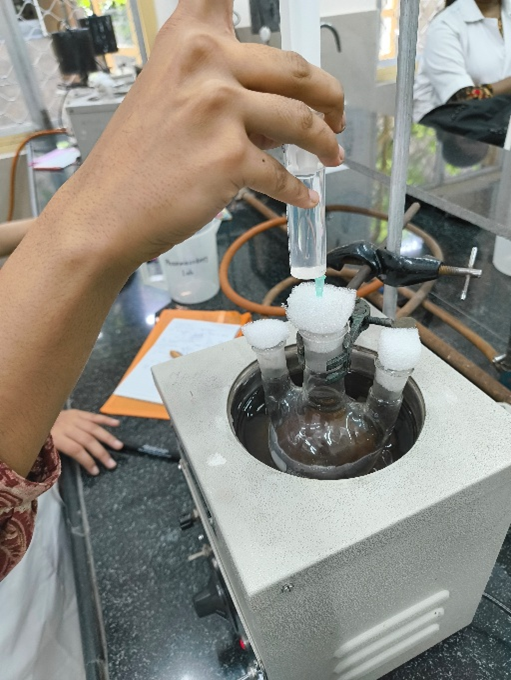OUTREACH
Our BIOMOD team, Carbonova, recently had the pleasure of hosting a two-day hands-on workshop on Magnetite Nanoparticle Synthesis and Enzyme Immobilization at ICT Mumbai, and we could not be more thrilled with how it turned out! From start to finish, it was clear that this event was a unique chance for participants to step out of textbooks and theory and dive straight into real, practical work.
One of the most rewarding aspects of the workshop was how engaged everyone was. We designed the sessions to be as interactive as possible, with each participant getting the opportunity to actively take part in the synthesis and immobilization processes. This wasn’t just about watching a demonstration; it was about getting hands-on, collaborating, asking questions, and learning together. This atmosphere of curiosity and open exchange made for a lively and enriching experience, where each step was brought to life in a way that only practical work can achieve.




Seeing the participants' enthusiasm was a highlight for our team. Many of them shared that the workshop gave them a valuable new skill set that they were excited to bring to their own projects. Their feedback reminded us why we put so much effort into making these sessions involved and focused on practical application. Hearing words of appreciation for our professionalism and the practical insights we offered was truly gratifying—it reinforced our belief in the importance of blending theoretical knowledge with direct experience. Additionally, the protocols established by the team for the synthesis and functionalisation of the magnetite nanoparticles were proven to be reproducible.
We left the workshop inspired by the dedication and curiosity of everyone who attended. It's experiences like these that fuel our commitment to fostering real, practical learning, and we’re so proud to have had the chance to share these techniques with such a passionate group. We hope everyone who joined us left feeling as motivated as we did to push the boundaries of their research and continue learning by doing.



